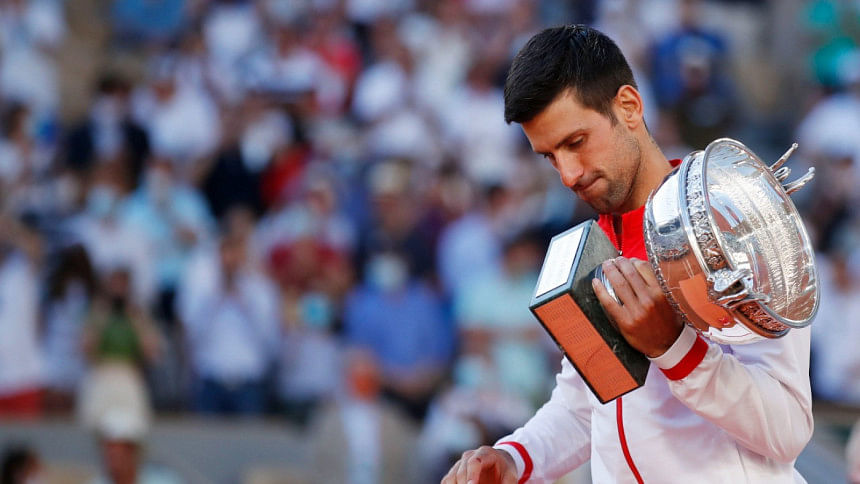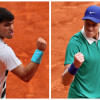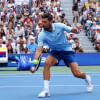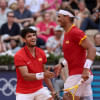Djokovic: The people’s champion

Novak Djokovic may not seem like the intimidating tennis virtuoso athlete from the outset; rather, like somebody one might approach in a room full of strangers to ask for the Wi-Fi password, for instance. Fondly referred to as the Djoker, his demeanour in general, feels so vibrant and likeable that one might feel like cracking an informal joke with him; and he seems humble and humane- way more than an average superstar athlete or a comic superhero, yet he has morphed into a champion hero for the ages and for all ages.
Even before his latest outstanding win in the finale against the rising star from Greece- Stefanos Tsitsipas, the Serbian superstar Djokovic had reached 6 finals appearance in all four Grand Slams at least six times- the only player ever to have achieved so; and that too, was by beating the lavaesque hot favourite- the immovable force from Spain, that is Rafael Nadal. In an epic, herculean display he had figuratively slayed the "King of Clay" against all odds, where only two players in history had beaten the Spaniard at French Open before in his illustrious career, and Djokovic was one of them.
The 4-hour 11-minute semi-final, turned into an all-time classic, had all the ingredients of build-up and suspense before it began. At the Roland-Garros prior to it, none had beaten the indomitable Nadal in semi-finals, for starters; none had beaten him ever without taking the match into the fifth set. And none could ever go on to win by going a set down. But all of those aforementioned unprecedented events transpired in Paris in a nail-biting thriller cinema- full of twists and turns at every other interval, with signs of potentially unfolding dramatic sequences were evident right from the first game and the first set.
The crucial third set, through which the Serb took a lead, will be remembered for a very long time for the players' spectacular fireworks-of-a-display. Even halfway into the fourth set, that eventually became the decider, very few could have placed a bet against the 13-time serial-winner of French Open, given the game was played at none other than the Spaniard's favourite terre battue.
The victory in the final against Tsitsipas was no less of a herculean feat. If the colossal victory against Nadal was akin to conquering Mt. Everest, then the comeback win against the talented Greek -- fifth ranked player in ATP rankings at the time -- was going to be analogous to climbing down the Everest in hostile conditions with impending blizzards and avalanches on forecast.
Although Djokovic was the hot favourite on paper, his fitness was still a huge concern, having had apparently exhausted it all against Nadal. Moreover, the Spaniard's defeaters historically could never manage to go on to lift the French Open trophy.
That is why the 34-year-old Djokovic's unbelievable triumphs of late, especially in post-pandemic era where he reached all two finals at French Open and this time, redeemed himself to win it. Thus, his great showcase of late, puts him in parallel to the classic mythological figure like Hercules- whose inner strength and ability to endure hardships to overcome monsters and generally doing the impossible, gave him an appeal as a protector of the people and made him a champion of the weak.
Greece's Stefanos Tsitsipas, the 22-year-old runner-up, interestingly mirrored another character from Greek mythology- Sisyphus, a king and also the founder of Olympic Games, who was punished by the gods for his audacious acts of trickery. In Homer's Odyssey, the hero Odysseus, coming across many a fallen hero, sees Sisyphus and his eternal punishment:
"Then I witnessed the torture of Sisyphus, as he wrestled with a huge rock with both hands. Bracing himself and thrusting with hands and feet he pushed the boulder uphill to the top. But every time, as he was about to send it toppling over the crest, its sheer weight turned it back, and once again towards the plain the pitiless rock rolled down."
So near yet, so far, as they say. Tsitsipas, who reached the final on his preferred clay surface, missed out on the trophy. In the grand final, he confidently took the first two sets against the depleted Djoker and started to smell victory, yet the boulder fell from near the peak. Young still, but he may have to wait a long while before attempting another sisyphean task in a Roland-Garros final with Rafael Nadal at the helm to remain the likely favourite in the upcoming years.
Meanwhile, Novak Djokovic can sit back and bask in the glory of the supernova explosion that he created, with the replica of La Coupe des Mousquetaires (translates to The Musketeers' Trophy that is awarded to the winner of the Men's Singles competition at the French Open) in his heroic hands. Even the replica, made of solid silver, takes over one hundred hours to be made; such is the French Open's prestigious, elite nature. Yet, it remains, as ever, as the tournament for the people, considering the nature of hurdles it present.
And besides, if we think of the average common man's life's stage as a tennis court, it would be most likely made of clay. To be more precise, it would be composed of red brick dust, crushed white limestone, coal residue, crushed gravel and drain rocks- just like the courts featured at Internationaux de France de Tennis.

 For all latest news, follow The Daily Star's Google News channel.
For all latest news, follow The Daily Star's Google News channel. 








Comments